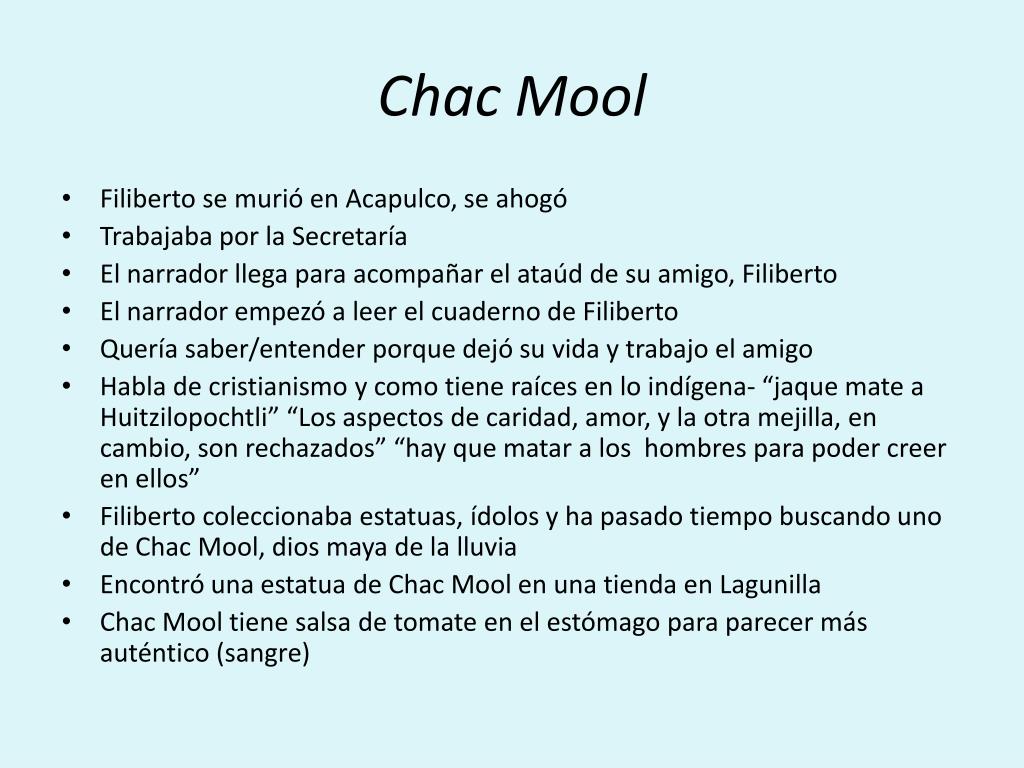

Weeks later Yucatán turned over the statue to the federal government, which brought it to Mexico City to the National Museum of Anthropology. In 1877 the Yucatecan government seized the statue and brought it to Mérida. Le Plongeon sought permission from Mexico's president to display the statue at the Centennial Exhibition in Philadelphia in 1876, a request that was denied. Le Plongeon's sponsor, Stephen Salisbury of Worcester, Massachusetts, published Le Plongeon's find, but revised the spelling to "Chac-Mool." The term chacmool is derived from the name “Chaacmol,” which Augustus Le Plongeon in 1875 gave to a sculpture that he and his wife Alice Dixon Le Plongeon excavated within the Temple of the Eagles and Jaguars at Chichén Itzá in 1875 he translated Chaacmol from Yucatecan Mayan as the “paw swift like thunder.” Le Plongeon believed the statue, which he had found buried beneath the Platform of the Eagles and the Jaguars, depicted a former ruler of Chichen Itza. The ancient name for these type of sculptures is unknown.


Other materials employed include ceramic and cement. Ī wide variety of materials were used to sculpt chacmools, including limestone and hard metamorphic and igneous rock types. The face of the figure looks upwards and the bowl was apparently used to grind foodstuffs. A chacmool from Guácimo, Costa Rica, combines human and jaguar features and grips a bowl. The chacmools of Chichen Itza and Tula depict young men with warrior attributes, while the chacmools of Michoacán depict elderly men with wrinkled faces and erect penises. Some of the figures are richly attired whilst others are almost naked. Some chacmools were raised upon rectangular bases. The figure may be lying on its back or on its side and the abdomen can be sunken below the level of the chest and knees or at the same level. There is great variation among individual chacmools, with some possessing heads that are right-facing and others left-facing, and some with the heads facing upwards some examples have movable heads. The chacmool is a distinctive form of Mesoamerican sculpture representing a reclining figure with its head facing 90 degrees from the front, leaning on its elbows and supporting a bowl or a disk upon its chest. Their symbolism placed them on the frontier between the physical and supernatural realms, as intermediaries with the gods. The chacmool form of sculpture first appeared around the 9th century AD in the Valley of Mexico and the northern Yucatán Peninsula.Īztec chacmools bore water imagery and were associated with Tlaloc, the rain god. Chacmools were often associated with sacrificial stones or thrones. In Aztec examples, the receptacle is a cuauhxicalli (a stone bowl to receive sacrificed human hearts). These figures possibly symbolised slain warriors carrying offerings to the gods the bowl upon the chest was used to hold sacrificial offerings, including pulque, tamales, tortillas, tobacco, turkeys, feathers, and incense. Maya chacmool from Chichen Itza displayed at the National Museum of Anthropology in Mexico CityĪ chacmool (also spelled chac-mool) is a form of pre-Columbian Mesoamerican sculpture depicting a reclining figure with its head facing 90 degrees from the front, supporting itself on its elbows and supporting a bowl or a disk upon its stomach.


 0 kommentar(er)
0 kommentar(er)
